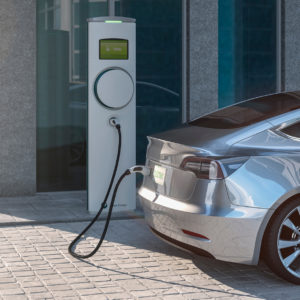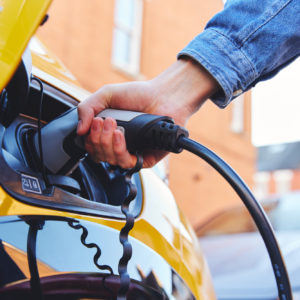Have you ever driven an electric car? It handles differently from internal combustion engine vehicles that burn gasoline or diesel. An EV also requires different care and maintenance. To better understand them, let’s look at how EVs work.
Engineering Differences Between EVs and ICE Cars
Here are some ways EVs differ from internal combustion engine (ICE) cars from an engineering perspective:
Propulsion
At first glance, an EV resembles diesel or gas cars. Unless the vehicle bears the recognizable brand logo of a car maker known for electric cars, it doesn’t have many visible signs.
However, you’ve probably already heard about the biggest difference between electric and ICE cars. Pure EVs don’t use an internal combustion engine that makes noise while burning fuel. They draw the power they need from a battery pack.
If the EV retains an engine, it’s a hybrid that uses electric motors to supplement the ICE during heavy loads or briefly run on battery power.
While pure EVs have a transmission, their system lacks a single physical gear. Most EV transmissions are single-speed systems that operate on electricity.
Like conventional transmissions, EV transmissions drive the wheels. But instead of transmitting power from the engine, EVs rely on electric motors to drive the axles and their connected wheels.
The more motors an electric car has, the more horsepower and torque it can generate. A hybrid has both methods and can switch between them or operate them together.
The combination of battery power, electric motors, and an electric single-speed transmission make pure EVs much quieter than ICE cars. Hybrids also operate with minimal noise when they’re in EV mode.
EV Battery Charging
EV battery packs have a finite storage capacity. They must charge from an external charging station.
Plug-in EVs have a charge port. Its location varies between manufacturers and models. If you can’t find the charge port, consult the owner’s manual for its location.
EVs can charge their batteries in a public station or at home. Public charging stations have the same arrangement as gas stations. The charging station’s cable connects to the EV’s charge port, charging batteries very quickly.
At home, the EV plugs into the wall socket or a Level 2 charging station. Charging at home takes longer, but it usually costs less, especially if it’s done at night when electricity costs are lower.
Hybrid EVs can charge their batteries while driving. Excess power produced by the alternator charges their battery pack. Additionally, the electric motor collects kinetic energy through a process called regenerative braking. However, hybrids have small battery packs with low capacity and lack charging ports.
Plug-in hybrids combine the best charging traits of pure and hybrid EVs. They have a charging port that enables them to plug into an EV charging station. Like hybrids, they can charge their batteries through driving and regenerative braking.
EV Charging Speed and Costs
EVs take far more time to charge their batteries than ICE cars need to fill their gas tanks. It can take anywhere between 30 minutes and a full hour to bring an EV’s battery pack to 80%. Not everyone has the time to spare, and multiple EVs might need to use the same charging station.
These factors affect EV charging speed:
- Battery pack size
- Charger type (Level 1, 2, or 3)
- The EV’s age
- Weather
- Battery temperature at the beginning of the charging process
- Presence and number of occupants in the EV while charging
DC fast chargers have higher voltages and shorter charge times. Once the EV battery pack reaches 80% charge, the charging rate drops to extend battery life and encourage EV owners to turn over the public charging station to others.
Aside from public charging, there’s also overnight charging at home. A level 1 home charger delivers 120 volts, while a level 2 charger gives double that. Home charging can take between 9 and 13 hours.
How Eco-Friendly Are Electric Cars?
Overall, EVs cause less damage to the environment and human health than ICE cars. However, they’re not completely eco-friendly.
Air Pollution
Unlike ICE vehicles, pure EVs don’t produce greenhouse gas emissions. Hybrid EVs do when their engine powers them, but electric mode produces no tailpipe pollution.
External charging is another thing entirely. Different regions and states generate electricity through various means. A state that gets its power from burning coal, natural gas, or oil creates air pollution as a byproduct of generating the electricity that charges EVs.
Conversely, states that rely on hydroelectric power and other renewable energy generate cleaner electricity. EVs in these areas enjoy reduced or zero emission levels while charging.
Manufacturing-Related Pollution and Waste
The factories and processes that assemble EVs generate pollution. The worst offenders are lithium-ion batteries, which are crucial in electric cars.
Lithium-ion batteries mainly use lithium, a rare element that only appears in a few difficult-to-reach areas. Extracting lithium from underground mines costs tremendous amounts of energy and money. Furthermore, the mining process causes significant damage to the environment.
Furthermore, EV batteries also use cobalt and nickel. These metals are more plentiful than lithium. Despite that, they’re still costly and polluting to mine.
Recycling lithium-ion batteries is costly, takes too much effort, and produces unreliable results. Thus, most used and damaged EV batteries are disposed of in landfills.
According to the 2022 GREET study by the Argonne National Laboratory, manufacturing an electric car creates 80% more air pollution than building a gas-powered vehicle. The lithium-ion battery pack accounts for a significant percentage of the emissions.
However, total greenhouse gas emissions show a different picture. When you account for all the pollution related to a vehicle from construction to the end of its service life, an EV has lower total emissions than a gas or diesel-powered car.
Any information provided on this Website is for informational purposes only and is not intended to replace consultation with a professional mechanic. The accuracy and timeliness of the information may change from the time of publication.



















